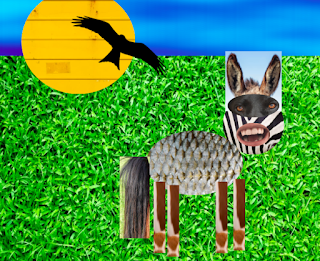I had the privilege of attending a workshop with Dr Aaron around T-Shape Literacy. This blog entry is a little long, but there was so much for me to take from this workshop, that I really wanted to type it up for future reference.
The workshop was built around a better understanding of how text can support students going deeper into their learning by providing a wide range of text. I really appreciate the explanations around the different text types, for example, what scaffolding text, complimentary text, challenging text and student text means. The part that I would like to get better at is the student text. I don't give my students the opportunity to choose the text on a topic and could really start having more focussed library lessons where they have a task to find information on a specific topic.
When then dug deeper into topics such as how we can teach aspects of literacy such as, "How do authors create a mood?". Lots of references were made to multi-model and finding text that has good examples of these.
After having all the text types and digging into the texts, you could prompt writing starting with provocative statements or questions e.g. zoos should be banned, is online learning the way to go?, the media always portray Papakura in a bad light. etc.
In order to be successful and giving students the opportunity to excel, we should increase their critical thinking about bigger issues, have more connection on topics that they have prior knowledge on, have more conversations that are authentic and relates to the text, bring creativity to the fore whether it is acting or a DLO, and finally, teach cognitive strategies e.g. skimming and scanning.
So where or how do we start?
1. Choose a topic and write provocations or a big question down.
2. Identify valued learning outcomes.
3. Think about the summative assessment & success criteria for VLO's (Valued Learning OUtcomes).
4. Curate text sets.
5. Engage with individual text.
6. Bring it all together.
Use as much local and relevant text as possible.
Think of ways that you can support students in "magpie-ing" new words as they engage in the text. (Hear, see, write, understand).
A typical vital lesson will be:
1. Create interest, enthusiasm and give a purpose.
2. Activate their prior knowledge and begin to build necessary background knowledge.
3. Introduce some key vocab.
4. Use Scaffolding text here (which is the first text introduced in a T-Shape literacy lesson).
Ideas to help with the introductions to the scaffolding text is:
- Create an anticipatory guide - what you thought about characters before you read the text and then after you read the text.
- Create a concept star where you can brainstorm text topics and find out what they know about the topic including if they know about any myths linked to it.
- Vocab jumble where students get a table of words has a few minutes to study it and then have to cover and write down as many as they can remember.
- Traffic light activity where the students highlight words according to the traffic light colours. Green: I am confident and know the words. Orange: These are words I have seen before, but are a little unsure about their meaning. Red: Words that are completely new to me.
- Writing frames: (this activity was quite fun to do).
We had to think of a very special place in our mind.
Write the following down:
- an emotion that comes up in your mind when you think of this place.
- place - where it is.
- a way of walking, how would you walk/run to this place (Adverbs)
- Colour - what colour jumps to your mind when you think of this place
- sound - what sound do you hear when you think of this place
- smell - what smell reminds you of this place
- Time of day
- what's the weather like there
Now use this information and complete the writing frame:
It was ... (time of day) when I walked .... (adverb) to the .... (place)/ It was a ... (weather) day. The sunglasses I was wearing made everything look .... (colour). There was a strong smell of ....(Smell). In the distance, I heard ...(Sound).
So what:
I really want to think more critically about the text I choose and focus on the first lesson to and how I can introduce new vocab. I will revisit this page often and try new things. The traffic light and writing frame activities grabbed my attention and I am sure the students will love using them.













